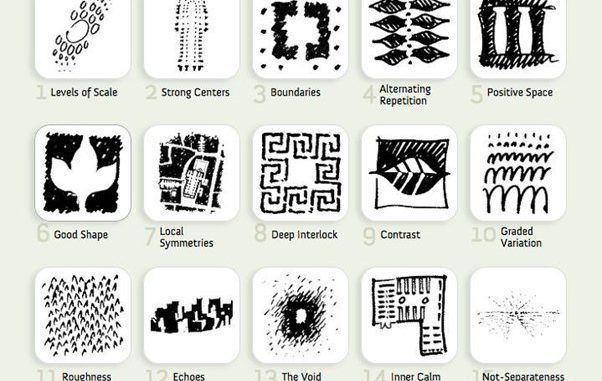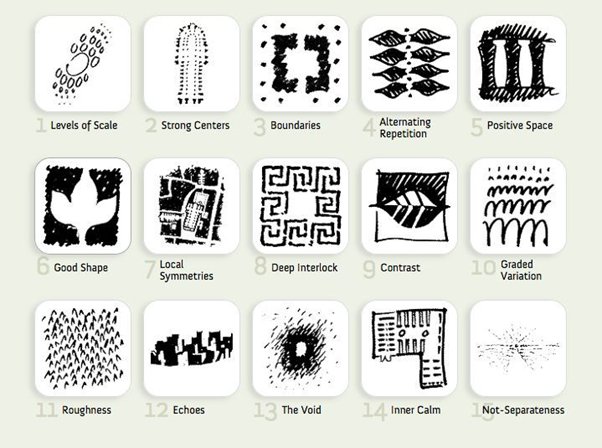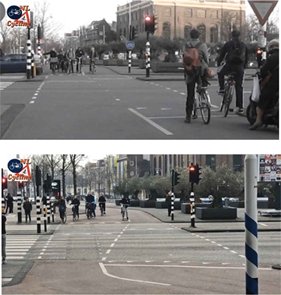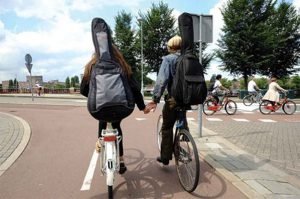
DCA Blog by Samuel Nello-Deakin.
How would you describe what makes a “good” urban environment to cycle in? If you are a cyclist yourself, you can almost certainly tell the difference in practice. Cycling in an average Dutch city, for instance, tends to be a fairly pleasant experience; by contrast, cycling in an average British city feels much more stressful.
Certain things are obvious enough: Dutch cities are flatter, have more cycle paths, less traffic, and so on. But how can we move beyond these basic points and develop deeper and more rigorous insights? Academics have been struggling with this question for years. Broadly speaking, their efforts have fallen in two camps. The first camp has sought to translate environmental factors into quantitative measures in order to statistically explore their relationship with cycling levels. This constitutes the mainstream camp in which the most cited and productive cycling researchers work (see for example 1,2,3). Meanwhile, the second, younger camp has focused on cyclists’ experiences of the environment using primarily qualitative methods, such as in-depth interviews (4), (auto-)ethnography (5), video recording (6) and ride-alongs (7).
While both these approaches have proven fruitful in their own terms, they are also limited in various respects. In the first camp, the main problem is that not all environmental factors relevant to cycling can easily, if at all, be expressed in a quantitative manner—take, for instance, the enjoyable feeling of cycling down a slope, the feeling of the weather, or returning the smile of a beautiful passing cyclist (or his middle finger). This fundamental limitation is acknowledged in most studies. In the second camp, it is often difficult to see how narrative accounts of cyclist experiences can easily be translated into a series of clear guidelines for policy-makers and practitioners. More importantly, there often appears to be little interaction between both strands of research: in practice, quantitative and qualitative approaches to understanding cycling environments often come across as mutually exclusive.

Pattern language: 15 principles of wholeness by Christoper Alexander (source: http://painterskeys.com/pattern-language-2/)
In our newly published article, we suggest that the idea of a “pattern language” for cycling might help bridge this divide. The concept of pattern language was originally developed by Christopher Alexander at the University of California, Berkeley, in the 1970s. Alexander’s aim was to catalogue physical environment configurations which supported human comfort (for the most part focusing on buildings and architecture), each of which he recorded as a distinct “pattern” with a unique name. Six foot balcony is an example of such a pattern: in order to be properly used, Alexander and his team noted that balconies need to be at least six feet deep.
What might be an example of a comparable pattern in the cycling realm? Here are two potential patterns which we can identify in Amsterdam: delta junctions and two aside jaunt. The first of these refers to building wide waiting lines for cyclists (making it possible to accommodate as many cyclists as possible), which then progressively become narrower as cyclists cross the junction to the other side. Unlike car drivers, cyclists are able to easily merge over a short distance, so we should make use of this when planning junctions for cyclists.

DELTA JUNCTIONS: Ad hoc (above) and by design (below).
(Sources: https://bicycledutch.wordpress.com/2018/04/10/intersection-upgrade-a-banana-and-a-chips-cone/).
The two aside jaunt pattern refers to the practice of cycling side by side, even holding hands in some cases. While this is unheard of in some countries, such a practice is common in the Netherlands and is clearly something many cyclists enjoy. Cycling paths wide enough to easily accommodate two cyclists facilitate this pattern.

TWO-ASIDE JAUNT (source: https://farm8.static.flickr.com/7453/27520025514_7915dbed6e_b.jpg).
Admittedly, there is much unclarity as to what a pattern language for cycling would look like, or how to develop such a language from the ground up. Alexander’s patterns referred to ‘fat nodes’ such as buildings, but had little to say about ‘thin spaces’ dominated by movement such as roads. More than anything else, we propose to see each proposed pattern as a hypothesis which needs to be validated through empirical observation; following a pragmatic approach, we think of patterns as mid-level abstractions which are adaptable to local context and open to modification. Through exploration and study, we can gradually establish the characteristics of individual patterns. In the paper, we suggest that the methodology of ‘Embodied Making’, which seeks develop new patterns starting from lived experiences and narratives rather than from existing solutions, may offer a promising tool to help us develop a pattern language for cycling. Together with BYCS, we are currently working on such a language for the city of Amsterdam.
Such a pattern language, we suggest, could offer a way of accommodating complexity, integrating the physical and perceived qualities of urban cycling environments. Perhaps most importantly, it might help provide a common language which could be used by planners, citizens and cyclist advocates alike in order to discuss how to improve conditions for cycling.
Note: The full academic (open-access) article this blogpost is based upon can be found at: https://www.tandfonline.com/doi/full/10.1080/23800127.2018.1505261

You must be logged in to post a comment.